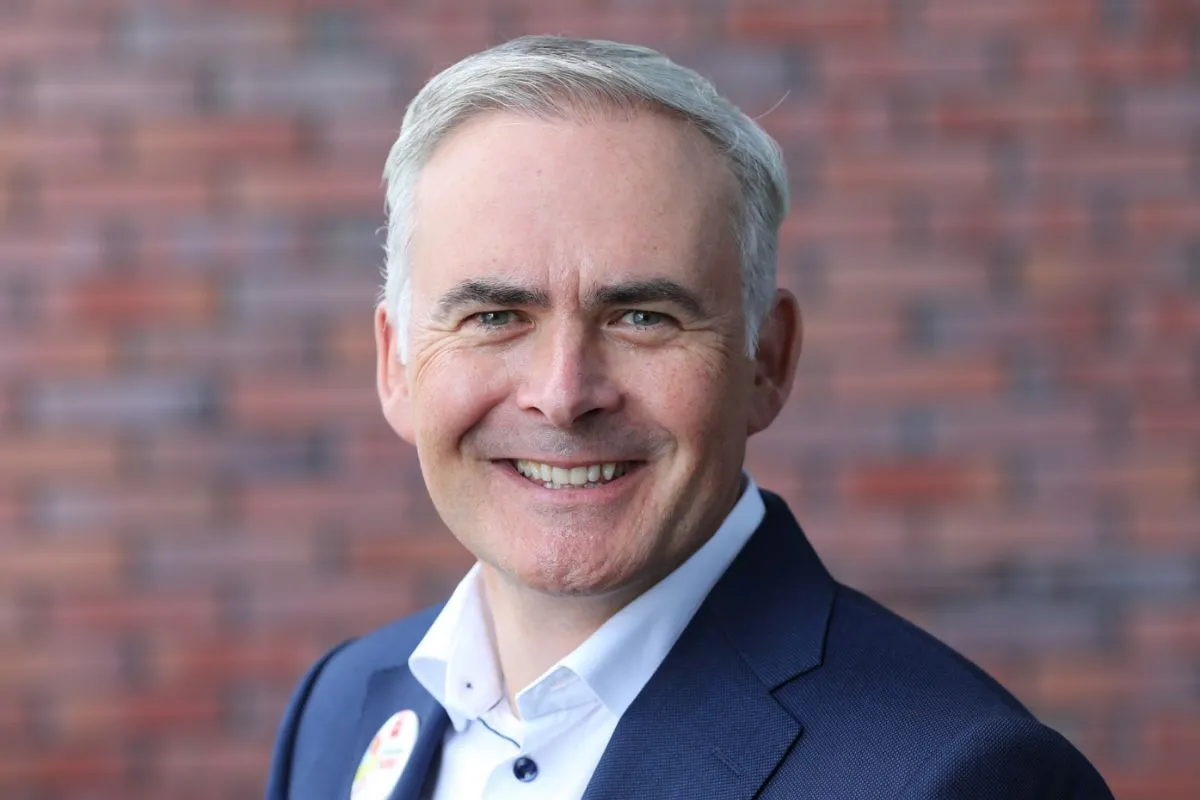Sustainability: the new 'licence to operate' for retailers
The Dutch non-food retail landscape is incredibly dynamic. Consumers constantly have to choose between a high-quality product or a cheap alternative that has a shorter lifespan, which is also partly due to the presence of large foreign chains.
Sustainability is increasingly wringing between the traditional price-quality balance. Consumers want to associate themselves with conscious purchasing behaviour, in which the future of the planet and the reduction of emissions are key themes. Especially in recent years, brand positioning has become more and more important.
We’re interviewing Tjeerd Jegen, HEMA’s CEO who was stepping down at the time. We reflect on developments in the Dutch retail landscape and how sustainability is becoming increasingly crucial for businesses to maintain their raison d’être.
Why is the theme of sustainability important to you?
“When I look back on my career in the international retail sector, sustainability is a recurring term. When I worked at Tesco in Asia Pacific, we were constantly going green. This was mainly expressed in giving back to nature, for example, by planting trees or giving back to local communities, such as buying land for starting farmers.”
And how has that sustainability issue changed in recent years?
“I notice the importance is growing. In the past, a company often wanted to create goodwill, to reassure consumers that it was giving something back to the planet. Today, that’s not good enough. Sustainability is becoming an essential element of business operations. I view it more as a licence to operate.”
How has that translated into your vision?
“At HEMA, I’ve never seen sustainability as a commercial strategy, but as the foundation for the brand. It was an evolution of the HEMA brand, which stands for “Good, fun and inexpensive”.
Good also refers to “good for the planet”. To me, sustainability was an integrated part of HEMA’s proposition. For example, we’ve agreed that if cotton is not 100% sustainable it will no longer be used. In 2021, you won’t get away with using cotton that isn't one hundred percent, but, for instance, ninety-eight percent sustainable. In doing so, I believe HEMA is a forerunner. In that respect, sustainability offers a competitive advantage.”
Are you saying that in your opinion, sustainability can’t be explicitly valorized among consumers? For example, by offering products that are more sustainable?
“I don't really believe in sustainability levels for products in the portfolio. It should be an integrated part of the entire portfolio. But if a business makes sustainability an integrated part of its strategy, they have to do much more than just selling recyclable items. If you only focus the proposition on the sustainable component of the product, you won’t be able to optimally valorize the product.
There is more to it than to market the product properly. The product is both sustainable and personalised and, for example, has a nice colour.
Fortunately, it’s now normal and logical to put sustainability at the heart of the organization. In fact, I think you’ll kill off your earnings potential if you don’t. It’s actually a mitigating measure for your earnings risk.
On the other hand, the product shouldn’t become two to three times as expensive, which it won’t if sustainable production takes place on a scale. I believe that if retailers don’t align their business operations with sustainability now, they will do so in the next ten years under the pressure of regulation. The brands of the future all have a sustainable character.”
“If a business makes sustainability an integrated part of its strategy, they have to do much more than just selling recyclable items”
Can you still properly explain to consumers why prices rise if retailers organise their production and supply chain more sustainably?
“Several first steps can be taken without the price going up, for example, by simply screening for more sustainable suppliers. But because of the next steps that are necessary for true sustainability, products will become more expensive. Examples include products made from recycled material. Selling a T-shirt for two euros is simply no longer possible.
I do see more understanding and passion among consumers when you offer a recyclable product, instead of articles that are ‘just’ made from sustainable cotton. In the end, the recycling part is easier to explain to the consumer. This also allows you to justify that a recycled product is more expensive.
But really I don’t care about the extra cost of sustainability, it’s the route to future earnings. Investments in sustainability are not a nail in the coffin, nor have I ever worried about the idea that sustainability investments could undermine a retailer. I’m more concerned that businesses could go under if they don’t implement it quickly.”
What do you think is the sustainability issue that needs to be solved urgently?
“Circularity. In recent years, we’ve taken good steps towards linear sustainability and we’ve achieved our objective quite quickly. This means we’ve started sourcing cotton completely sustainably. But you still keep making extra products in the process. The real challenge lies in circularity: ensuring that products that have already been used can be completely renewed. That problem transcends both industry and production location.”
“The real challenge is circularity: ensuring that products that have already been used can be completely renewed”
Most retailers are in the same boat. Is more collaboration needed to get that done?
“Yes, and that’s the bottleneck. Circularity must be driven and supported by the industry. The ‘every man for himself’ game isn’t going to work, this is much too complex. If we want to achieve circularity, we must set up a collective system for products that consumers no longer want to use. These products must be retrieved decentrally but collected centrally.
It also requires us to think carefully about the location of our production sites and how we can organise this more efficiently with the entire chain. Products are used by our customers in Europe and most of them are currently still being produced in Asia. Full circularity would mean that those both new and recycled products are constantly shipped between Europe and Asia. Surely, that can’t be the intention. With full circularity, you ultimately need production close to your consumers.”
Yet you clearly see different propositions between retailers in the field of sustainability. Is that consistent with the investments and changes that are required?
“Due to the evermore important role of social media and the increasing demand for transparency, we’ve created an issue-driven society. And even more is expected and demanded by consumers, which is only gaining momentum. As a result, low-priced players have an increasing need for sustainability in their assortment. That’s still voluntary for now, but I do believe that also governments realise this is unsustainable. You can already see the first initiatives on plastic at European level and I can’t imagine that regulation on the use of non-sustainable raw materials will be a long time coming.
Nevertheless, knowledge sharing in the field of material use, the purchase of raw materials and alternative production processes remains crucial. If we in the Netherlands, such a small country, can’t even work together, the outlook will be hopeless. But I remain optimistic. The great thing about the sector is that it doesn’t matter in which part of the value chain you operate. Production is almost the same everywhere, so we can quickly take steps on a broader level.”
With this emerging transition, transparency plays a major role. Is it still clear to consumers who is actually sustainable?
“Quality marks are a major challenge what you tell consumers. Ideally, you want the packaging to explain how the product is made and where it comes from. What doesn’t help is the lack of a standard sustainability label, at least no suitable label that is easy to understand for the consumer. Continuously spreading the message is therefore difficult for retailers.
Sustainability is a party for insiders, such as NGOs and government institutions. They demand very thorough reporting and only when you report on sustainability can you get recognition and win awards. But consumers choose their product in the store and the moment consumers see the product, it must be clear to them how sustainable it is. So that requires an independent, broadly supported classification system.”
How can this be done differently in your eyes?
“You can build cross-industry structures with a generic definition and a general label supported by all NGOs. A general canon of compromise-based sustainability might work. Not ideal, but better than everyone having their own interpretation. This should eventually lead to a narrative to the customer, with one certificate, quality mark or feature per theme, so the customer recognises and acknowledges sustainability. That’s an extremely important condition to create a breakthrough.”
If we take a look at the future, how sustainable will the Dutch retail landscape be in your view in ten years’ time?
“I thought about shared ownership for a while, but in the price range of most retailers, that’s not an option. We need to focus on something else. When designing the product, we must consider recyclability and easy reusability when the product Is no longer needed. Consumers need to know they can buy a product almost guilt-free and that the product can be given a new life after use.
“Businesses can choose now: change right away or be forced to do so in the next ten years”
You want to do that with recycled raw materials, without fossil fuels and without chemicals to colour the articles. I also assume that in ten years’ time, we’ll no longer be allowed to make and use virgin plastic. At the moment, this is still voluntary, but by then, it’ll be enforced by law.
Ultimately, business can choose now: change right away or be forced to do so in the next ten years. Management boards must now take the plunge and make sustainability a measurable and non-negotiable objective.”






